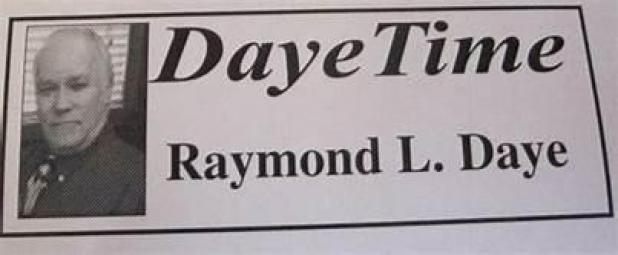
DayeTime: 8 days in Jerusalem 2022
In just over two weeks, another Easter season will be here again. The week beginning with Palm Sunday and ending on Resurrection Sunday, known as Passion Week.
It is a familiar story that has been called “The Greatest Story Ever Told.” It is the story of Jesus Christ’s week of trials, temptations and tragedy in Jerusalem.
A few years ago I posted a series of articles entitled “8 Days in Jerusalem” on the Avoyelles Today website. The eight articles summarize events included in the Gospel accounts of that historic week, written in the familiar format of a newspaper article.
Since the internet is forever, for good or ill, there is no need to post them again. Those who have not read the series and want to, or those who want to reread them during this holiday season, can probably find them most easily by googling 8 Days in Jerusalem Avoyelles.
If your search yields the same results as mine with that instruction, you should see a row of paintings. Click on “view all,” find the story you want to read and click on the writing under the photo. This will take you to the archived version of the story on avoyellestoday.com. If you have a problem finding the series that way, you can go to avoyellestoday.com, go to the "News" button, hit "Editorial" and go to Page 10 to start the series. The other articles are on Pages 9 and 8.
Day 1 is Palm Sunday, Jesus in Jerusalem. Day 2 is Jesus in the Temple, and so on up to the Crucifixion on Friday and Resurrection on Sunday.
The paintings accompanying each story were painted by master artists in the 1800s. The artist’s name is listed the same way we note the photographer of a news photo, with the additional info showing the artist’s birth and death years.
My intent is not to preach a series of sermons. There are many in this area who do a much better job of that than I can.
The series was written to provide an everyday perspective of the events of that Easter Week 2000 years ago.
Those reading the series will note that the day’s accounts may include things that happened late at night on that day. For purposes of this series, I strayed from realism slightly to enable including each day’s major events in that day’s article. I also use our modern time-of-day references to better explain the day’s events.
For those unfamiliar with the Jewish “day,” a day begins at sunset, not sunrise. That's why the Sabbath, the Jewish holy day of the week, began at sunset that Good Friday 2000 years ago. To keep things simple, sunset is considered 6 p.m. and sunrise is considered 6 a.m. However, the Scriptural references to the hour of the day are marked beginning with sunrise — the third hour (when the Crucifixion began) is 9 a.m. and the ninth hour (when Jesus died) is 3 p.m.
For the most part, the articles stick to information presented in the four Gospels. There are a few historical references that were added and a foreshadowing of Jerusalem’s destruction in 70 A.D. -- predicted by Christ during Easter Week -- to put the events of that week into historical perspective.
Nothing was fabricated, except some literary license to quote "unnamed sources" close to Pilate or Caiphas -- but even those are comments supported by Biblical and historical sources.
Readers will note the articles do not use the term “Christ” as a part of Jesus’ name. Instead, the article uses terms a local reporter would have used to identify a person back in the 1st Century A.D.
Those names include Jesus of Nazareth or Jesus the Nazarene, since the use of one’s hometown was often used to differentiate him from someone with the same name.
Jesus bar-Joseph is also used, which means Jesus the son of Joseph. Joseph was identified as Jesus’ earthly father, and that was also a way to differentiate among people with the same name.
Jesus the carpenter is used, because one’s occupation is another source of what later became surnames.
Historical time references are based in the 1st Century, such as references to Passover and the Exodus. The Israelites are believed to have left Egypt about 1,300 years before the Crucifixion.
As with a newspaper’s coverage of any event, not everything that happened or was said can be included in an article, but I have tried to include the main actions, comments and events of the day in that day’s article.
This story can be read simply for entertainment or it can be a prompt for the reader to undertake their own study of the Scriptures to see what insights they may reveal that this series missed.
Whether you decide to start the Easter season early by reading the articles now or want to wait and read one a day during Passion Week, I hope you enjoy the series.
